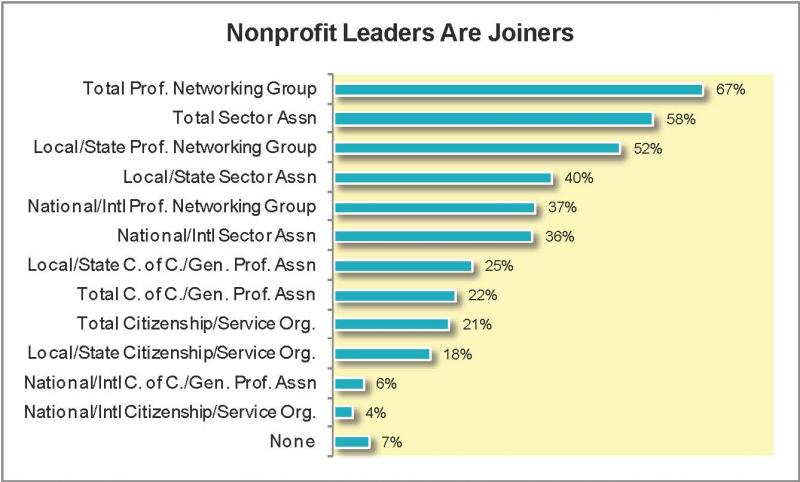Thriving Nonprofits Rely on Peers and Professionals
backNo nonprofit will solve a large social problem in isolation. The multiplier effect of pooled resources is critical to success. Collaboration brings together the broad range of resources and expertise needed to achieve lasting solutions.
Now, more than ever, nonprofits need to exploit the power of networks to increase their own impact. It may seem counter intuitive, but nonprofits need to belong to organizations beyond sector associations, such as chambers of commerce, so they meet business people who may contribute to their causes with money and in-kind donations.
Nonprofits do participate in a range of organizations, from networking groups to sector associations, yet many do not leverage the potential value of these relationships, according to Use and Value of Resources by Small Business Owners and Nonprofit Leaders, a soon to be released survey from Ventureneer. While nonprofit leaders join organizations, they don’t regularly go to their events.

Wei-Skillern noted:
- The parties [in a network] would rather discuss and work through a problem than simply abandon the relationship.
- There is a high level of trust.
- They share and help each other: This is the “norm of reciprocity.”
She continued, “Benefits of networks that have been documented by researchers include mutual learning; enhanced legitimacy and status for the members; economic power; and an enhanced ability to manage uncertainty.”
Leaders of growth nonprofits use their networks differently than leaders of struggling organizations. Successful organizations are more likely to exchange advice and guidance with peers, and consult with professionals, such as accountant and lawyers.

Leaders of growth nonprofits are also more likely to use Web 2.0 tools, including webinars, online peer-to-peer advisory groups, networking events and conferences.
Both these networking techniques – exchanging information and Web 2.0 tools – can be used to move a nonprofit from “struggling” to “growth.”
Specifically, technology makes it easier and quicker to:
- aggregate and coordinate resources
- develop and share knowledge
- spread ideas
You are – or can be – part of many networks. Are you a member of a professional association, the Chamber of Commerce, an alumni association, a civic group, an umbrella organization? Can you share resources with any of these colleagues? Can you join forces to solve a common problem? Can you exchange contacts or give each other referrals?
If you’ve created a network or benefited from one, let us know what you did and how it helped. That’s networking!




